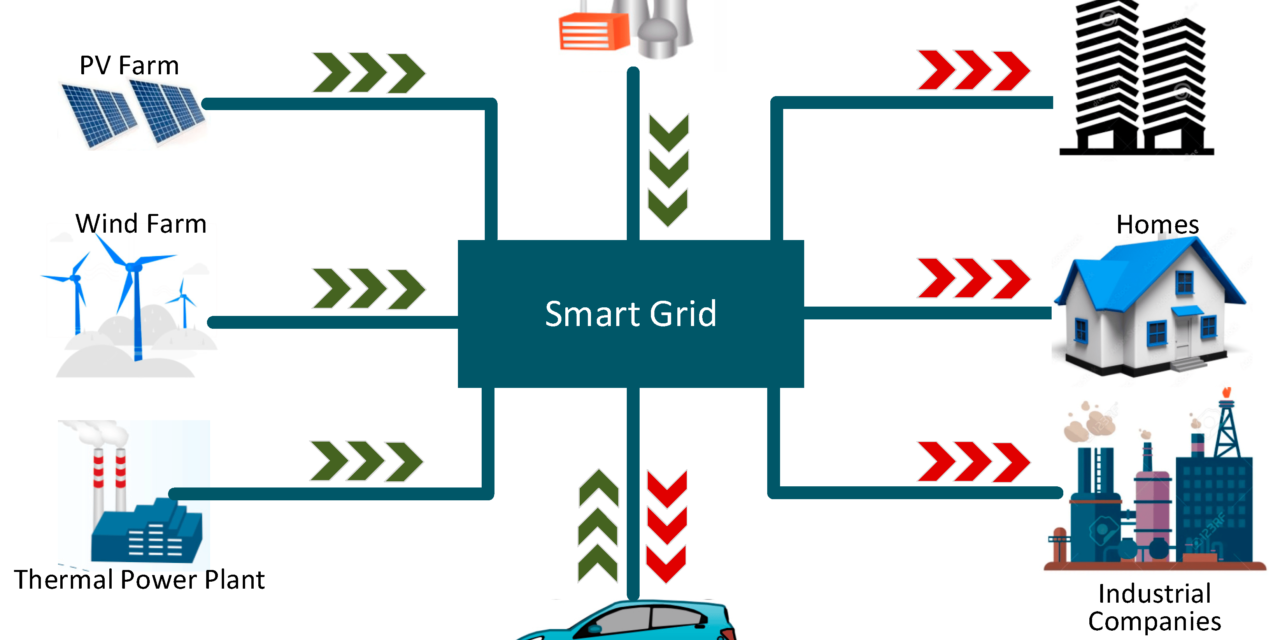The development of smart grids—advanced electrical grids that incorporate digital communication, automation, and advanced control technologies—is significantly influencing the design and functionality of transformers and electrical devices. Here’s a detailed look at how these advancements are reshaping the industry:
1. Smart Transformers
Smart grids require transformers that can do more than just step up or step down voltage. These “smart transformers” are being designed to integrate with grid communication systems and offer advanced capabilities.
a) Key Features of Smart Transformers:
- Real-Time Monitoring:
- Built-in sensors monitor parameters like load, temperature, oil quality, and voltage.
- Data is transmitted to control centers for proactive maintenance and optimization.
- Load Management:
- Smart transformers dynamically adjust voltage levels to match demand and prevent overloading.
- Energy Efficiency:
- Minimized losses through advanced materials (e.g., amorphous cores) and real-time control.
- Decentralized Operation:
- Operate autonomously to support microgrids and distributed energy resources (DERs) like solar panels and wind turbines.
b) Applications:
- Integration into renewable energy systems.
- Voltage regulation and stabilization in smart grids.
- Supporting energy storage systems and electric vehicle (EV) charging networks.
2. Advanced Electrical Devices
Smart grids demand electrical devices that can communicate, automate, and respond to grid conditions dynamically. This has led to innovations in circuit breakers, relays, and other devices.
a) Smart Circuit Breakers:
- Incorporate communication modules to report status, faults, and load data in real time.
- Enable remote operation, diagnostics, and fault isolation, reducing downtime.
- Enhance safety through predictive fault detection.
b) Intelligent Relays:
- Support adaptive protection schemes that adjust settings based on grid conditions.
- Monitor power quality and fault currents, enabling faster response and better grid reliability.
- Enable seamless integration with SCADA (Supervisory Control and Data Acquisition) systems.
c) Energy Storage Systems:
- Electrical devices like bidirectional inverters and battery management systems (BMS) are crucial for managing energy storage in smart grids.
- Allow smooth integration of renewable energy and peak load shaving.
d) Sensors and IoT Devices:
- Extensive deployment of IoT-enabled sensors for condition monitoring of transformers and electrical devices.
- Collect data on temperature, vibration, humidity, and load, enabling predictive maintenance.
3. Design Adaptations for Renewable Energy Integration
Smart grids facilitate renewable energy sources, necessitating changes in transformer and electrical device design:
- Transformers:
- Designed to handle bidirectional power flow from sources like solar panels and wind turbines.
- Withstand frequent load fluctuations and harmonics generated by renewable systems.
- Devices:
- Advanced inverters and rectifiers for grid-tied renewable systems.
- Capacitors and inductors designed for harmonic filtering and voltage stabilization.
4. Enhanced Communication and Interoperability
Smart grids require seamless communication between devices. This has driven the incorporation of:
- Advanced Communication Protocols:
- Devices now support protocols like IEC 61850, DNP3, and Modbus for interoperability.
- Edge Computing:
- Transformers and devices are equipped with computing capabilities to process data locally and reduce communication latency.
- Cloud Connectivity:
- Enables centralized monitoring, control, and data analytics.
5. Focus on Energy Efficiency and Sustainability
Smart grids prioritize efficiency and sustainability, influencing device design:
- Eco-Friendly Materials:
- Use of biodegradable transformer oils and recyclable materials.
- Energy-Efficient Devices:
- Development of low-loss transformers (e.g., amorphous metal core transformers) and energy-efficient circuit breakers.
- Demand-Side Management:
- Devices designed to enable demand response, where consumers adjust usage based on grid needs.
6. Resilience and Reliability
Smart grids emphasize reliability and resilience, influencing transformer and device design:
- Fault-Tolerant Designs:
- Transformers and devices designed to handle transient surges, voltage sags, and overloads more effectively.
- Self-Healing Features:
- Automated systems detect and isolate faults, rerouting power to minimize disruptions.
- Advanced Surge Protection:
- Enhanced surge arresters and devices that safeguard against lightning and transient overvoltages.
7. Support for Electric Vehicles (EVs)
The rise of EVs in smart grids drives innovation:
- Transformers:
- Designed to support high-capacity EV charging stations.
- Handle sudden load spikes from fast charging.
- Electrical Devices:
- Smart meters and load controllers manage energy flow for EV charging infrastructure.
- Advanced relays and breakers ensure safety and reliability in high-current applications.
8. Data Analytics and Predictive Maintenance
Smart grids rely heavily on data, influencing design:
- Predictive Maintenance:
- Devices equipped with sensors and analytics to predict failures before they occur.
- Reduces downtime and extends equipment life.
- Big Data Integration:
- Transformers and devices provide data for grid operators to optimize energy flow and plan upgrades.
9. Compact and Modular Designs
To support flexible and scalable smart grid architectures:
- Compact Transformers:
- Fit into urban environments with limited space.
- Modular Devices:
- Allow easy upgrades and integration with evolving grid technologies.
The development of smart grids is driving the evolution of transformers and electrical devices towards greater intelligence, efficiency, and adaptability. These advancements support renewable energy integration, enhance grid reliability, and enable real-time monitoring and control, ensuring that the electrical infrastructure can meet the demands of a more sustainable and interconnected future.














